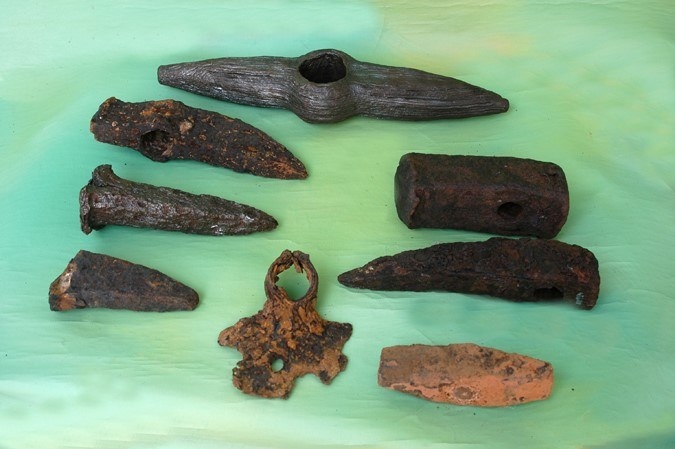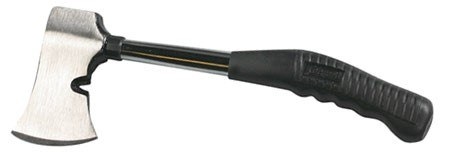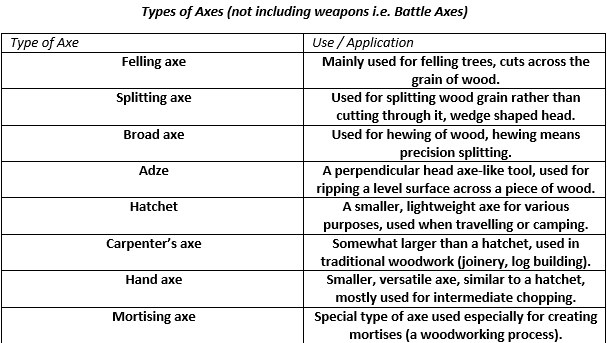Hand tools – their history as long as human evolution itself History of hand tools goes back to the origins of the human species. Use of tools began at a very early stage of human evolution. It was the use of hand tools that helped shape and develop primitive communities. Before all, tools tell us about the society which made and used them. More advanced societies tended to use more tools as they were creating more objects for a more sophisticated lifestyle. Having said this, the history of tools doesn’t follow a continuous upward curve. There were periods in human history when tool making and tool use was slow, even regressive at times.

It was the ancient Romans that created an array of hand tools, most of them recognisable and still in use today (of course modernised accordingly). The Roman craftsmen were indeed masters of their trades, the ancient Roman craftsman had a much more extensive ‘toolbox’ than their medieval successor. The Romans kept developing new, more effective tools to meet the growing demand of their trades. In ancient Rome there were sawyers, carpenters, carvers, joiners, wagon builders, ship builders, millwrights, musical instrument makers etc. Each of these trades required a set of hand tools for the building/production process of various goods and objects. This is one of the main reasons why ancient Romans advanced so much in making and use of hand tools altogether.
Tools were how a craftsmen made a living. Without the right tools they would be unable to work and provide for themselves and their family. Obtaining the necessary set of tools for a given trade in those days was an expensive ordeal. Craftsmen had to invest in quality tools in order to produce quality work. Back then, a craftsmen had two options – to go out and purchase all necessary tools from a specialist maker, or make the tools themselves provided they had the means and knowledge to do so. To put things in perspective – in the 1700s, the cost of a fully equipped tool chest was about 15 British Pounds in today’s money. This was about the annual salary of a skilled workman. Tools were indeed expensive and this is why many hand tools found by archaeologists are stamped or engraved/carved with people’s initials or full names.
This showed that craftsmen in those days valued their tools highly and kept such objects safe, not unlike today. In some cases, tools were so hard to come by and expensive that craftsmen actually passed them on to their sons and grandsons (who also took up the trade) or sold them on for profit upon retirement. This is clearly seen by the different names stamped/engraved on various tools. It is these names and manufacturer markings on tools that have helped archaeologists and historians piece together the timeline of tools use across the centuries.

Axes and adzes – perhaps the most ancient of tools Axes and adzes are amongst the oldest examples of hand tools known to have been used by ancient peoples. Early axes and adzes we know of, date back to at least 8000 years BC. In those early stages of toolmaking, ancient humans used Reindeer antlers to make their first axes and adzes. Antlers were sharpened on one side to produce a cutting edge. The rest of the antler formed the axe handle, though that development of the axe handle took some time. The next stage of axe and adze making was to hollow out the stump end of the deer’s antler and insert a piece of sharp flint (or other type of stone). Archaeologists believe that first proper examples of antler axes with wooden handles appeared circa 6000 BC.
The Bronze Age saw the production and widespread use of bronze axes and adzes, the process began sometime around the year 3000 BC in what is now the Middle East. The axes of those Bronze Age days were not as the ones recognised in modernity though. The first proper examples of iron axes and adzes similar to what humans use today began appearing in the period 500 – 200 BC. These tools (and weapons) were similar in size, weight and shape to their modern counterparts though they did not have the same cutting power, strength and durability. In the Middle Ages, axe and adze making was in its heyday. During the Dark Ages, tools and weapons of this kind were getting better, stronger and the available ‘product range’ expanded greatly.
As Europe slowly exited the Dark Ages, the use of axes and adzes as tools and weapons somewhat decreased. This could be said for the 1700s in particular when developments in saw design and saw making slowly but surely pushed axes and adzes out the door as the primary tools for woodworking.

However, this didn’t mean that axes and adzes were never to be used again but on the contrary. These tools simply found a new niche and application and although not as essential as they used to be, axes and adzes remained an important part of the tradesman kit. In 1970, the official list of tools in trade catalogues still contained nearly fifty different kinds of axes and adzes. These were mostly used in coach making, boat building and coopering.



